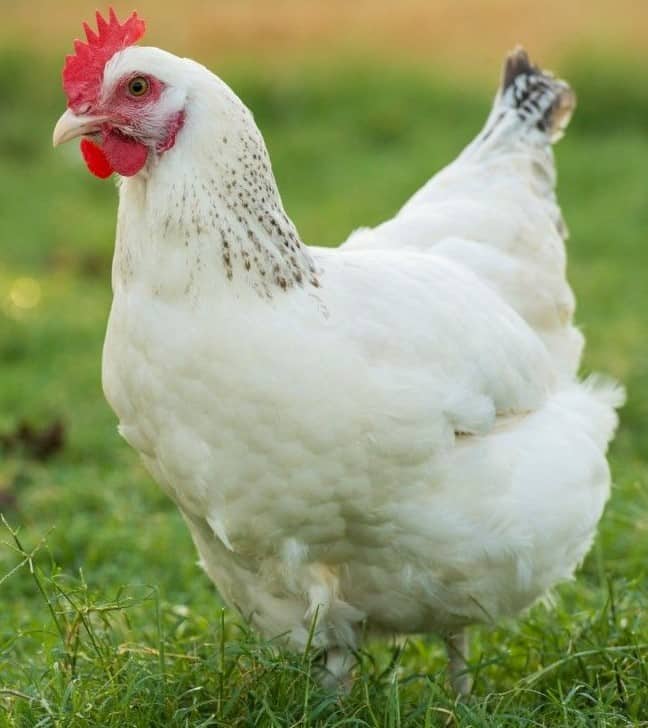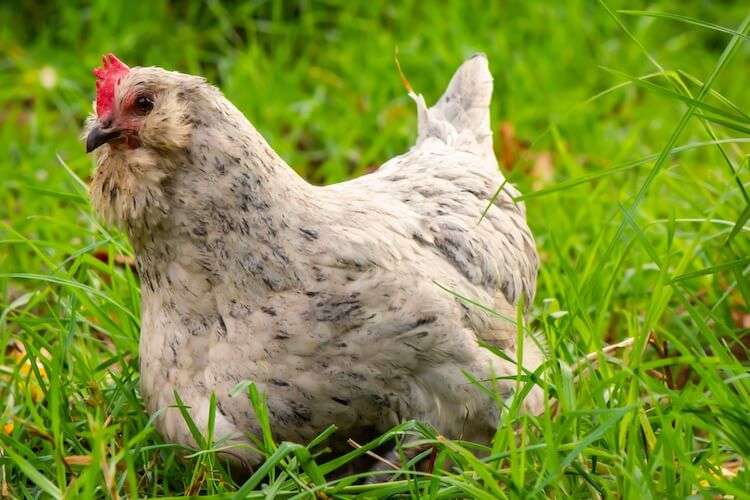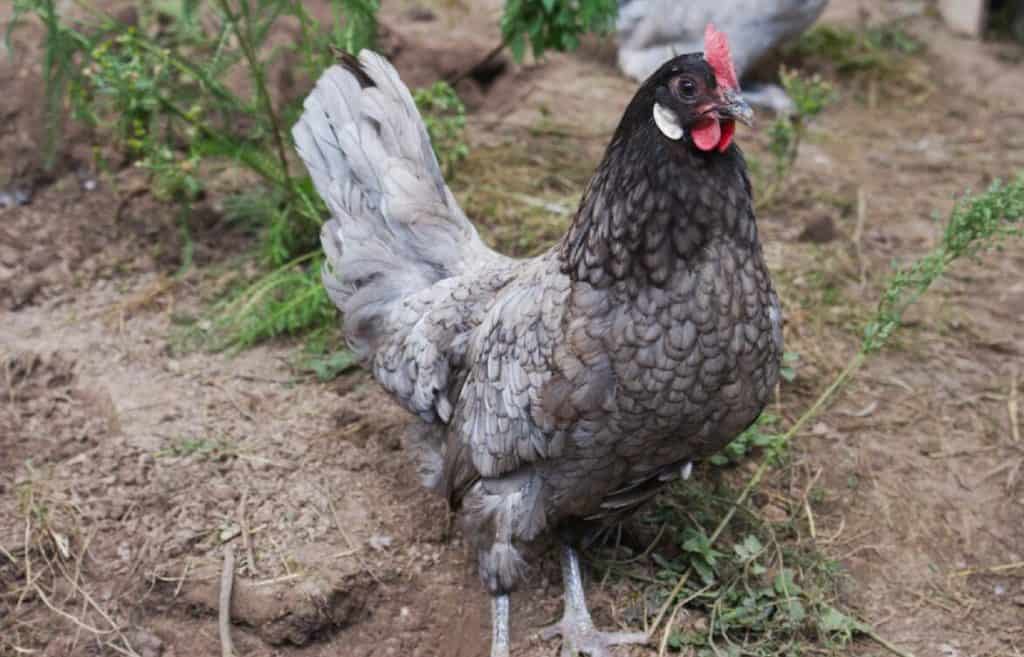
A breed of chicken known as the Delaware was developed in the American state of Delaware. It originally played a significant role in the U.S. poultry business, but today it is in grave danger. It lays rather well but is mostly suited to meat production. Its distinctive pattern on its plumage qualifies it for inclusion in poultry criteria for exhibition.
Description
The Delaware has a deep, broad body and is a medium-sized chicken. The first thing you’ll notice about them is that they’re robust. Her body is shaped like an inverted triangle with a U indentation when viewed from the side. Delawares have a single comb with five points as it should be. Their beak is a yellow or horn hue, and they have red combs, wattles, and ear lobes. Her skin is golden, and her legs are incredibly muscular. Each foot she has will have four toes. Except for their hackle, wings, and tail regions, Delawares are entirely white. These regions have tight black feathering and are specked with black. No further color variations are known.
As Pet
They are a low maintenance bird that, if reared properly, are peaceful, pleasant birds with a keen sense of curiosity, with the exception of frostbite on their combs.

Housing
This type of chicken needs at least 8 square feet of space per bird within the coop due to their broad bodies and large size. Roosts should be around ten inches wide and should preferably be placed close to the ground so that birds may easily jump on and off.
While most websites recommend a 10-inch box for a typical breed, nest boxes that are 12 inches deep and 12 inches broad would work best for Delwares. Delawares may be forced out of the nest by more dominant breeds since they are less likely to engage in conflict or defend themselves. Especially if you plan to raise chicks, it is a good idea to provide your chickens enough room to nest.
Feeding
Delaware chickens should be given a 20–24% protein crumble beginning diet as chicks. After the initial six to eight weeks, you can reduce the higher 24% protein option to 20%. They will require access to food every single day. Also necessary for chicks is fresh, clean water. For the first few days, you can give them a boost by mixing an electrolyte and vitamin powder into their drink. Up until the time they are about sixteen weeks old, they can continue eating 20% protein. They are now ready to be progressively transferred to a 16% layer pellet or crumble.
They should have access to oyster shells in a separate container in addition to the meal because it helps create strong shells. If they don’t have access to the outside, insoluble grit should also be made separately available. They might begin the absorption process by grinding down their food with the use of grit. They should have access to clean, fresh water at all times.
Temperament
There are other chicken breeds that are recommended for dual purposes, but not all of them will be as laid-back.
When you’re searching for an all-around chicken to add to your backyard coop, Delaware hens have a kind and peaceful disposition. Some are shy, while others are too independent to be pets.
Grooming
These hens adore taking a bath in the dust, and they will also enjoy some herbal essences sprinkled with the loose sand to aid with bugs and extra feather oils. They must undergo routine checks for mites, lice, and other parasites. To keep your chickens healthy, check their feathers at least once a week for these pests.
Table





